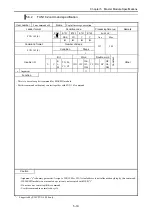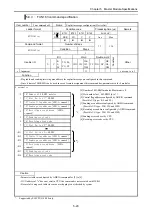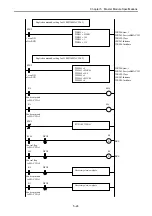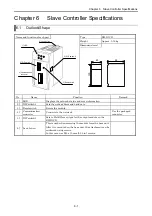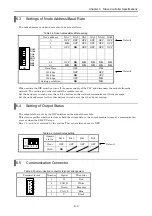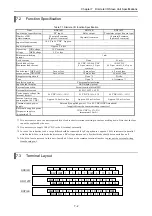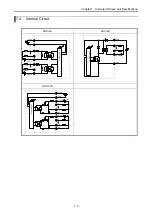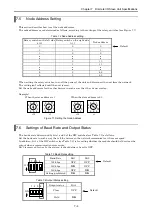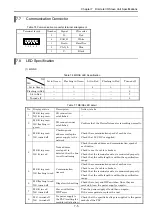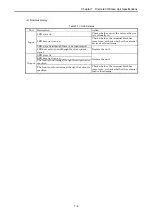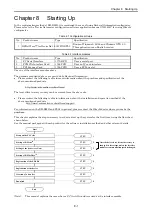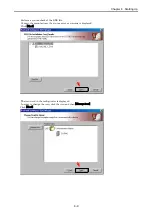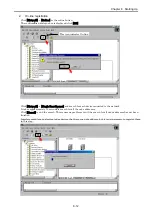
Chapter 7 Discrete I/O Slave Unit Specifications
7-4
7.5
Node Address Setting
This section describes how to set the node addresses.
The node addresses are determined as follows, according to the settings of the rotary switches (see Figure 7.1).
Table 7.2 Node Address setting
Rotary switch on the left side
(
×
10)
Rotary switch on the right side
(
×
1)
Node address
0 0
0
0 1
1
0 2
2
•
•
•
•
•
•
1 0
10
1 1
11
•
•
•
•
•
•
6 2
62
6 3
63
When setting the rotary switches, turn off the power of the unit and disconnect the unit from the network.
The setting isn’t reflected until the unit is reset.
Set the node addresses for the other devices in such a way that they do not overlap.
Example)
When the slave address is 1
When the slave address is 63
7.6
Settings of Baud Rate and Output Status
The baud rate is determined by bits 1 and 2 of the DIP switches (see Table 7.3) as follows.
Set the baud rate in such a way that all the devices on the network communicate at the same speed.
In addition, bit 4 of the DIP switches (see Table 7.4) is for setting whether the module should hold or clear the
output when a communication error occurs.
Bit 3 is reserved for use by the system; it should always be set to OFF.
Table 7.3 Baud Rate setting
Baud Rate
Bit1 Bit2
125 kbps
OFF OFF
250 kbps
ON
OFF
500 kbps
OFF
ON
Setting prohibited
ON ON
Table 7.4 Output Status setting
Output status
Bit4
Clear
OFF
Hold
ON
0
1
2
3
4
5
6
7
8
9
0
1
2
3
4
5
6
7
8
9
0 1
2
3
4
5
6
7
8
9
0 1
2
3
4
5
6
7
8
9
×
10
×
1
×
10
×
1
Figure 7.1 Setting the Node Address
1
2
3
4
O N
1
2
3
4
O N
Default
Default
Default

